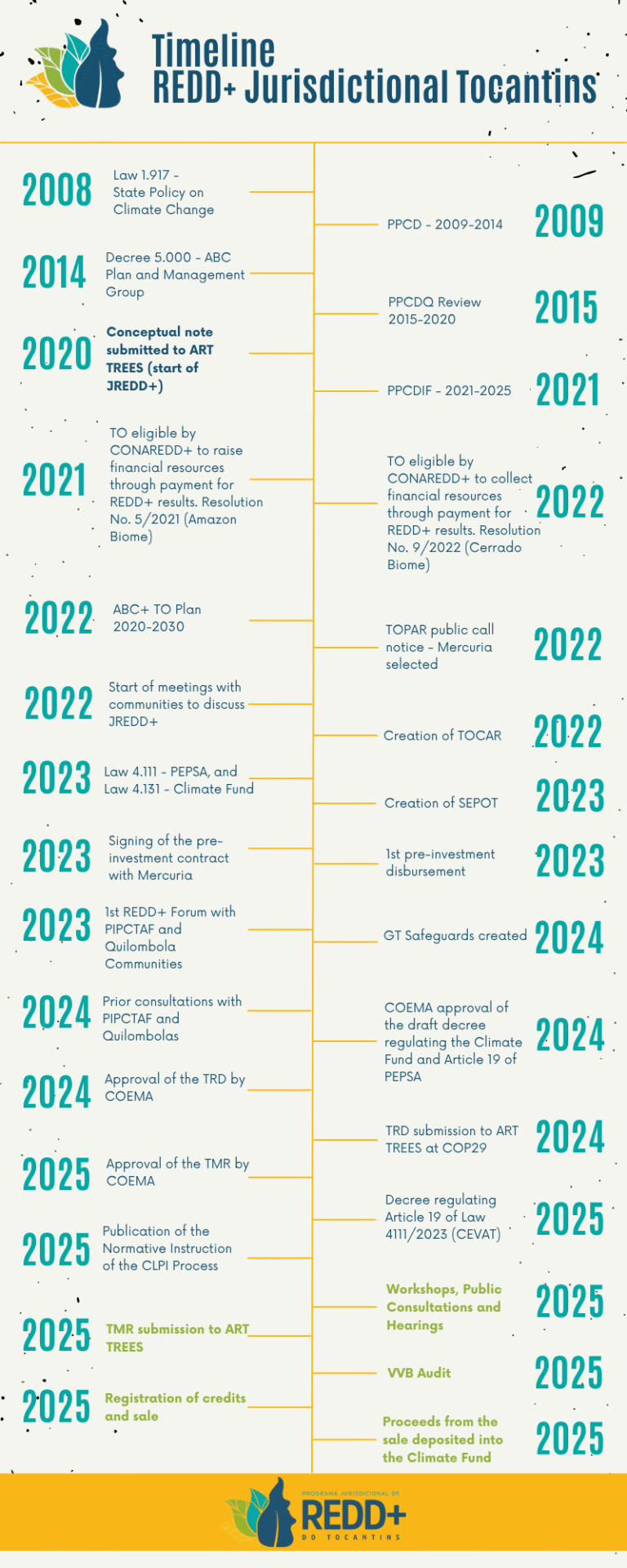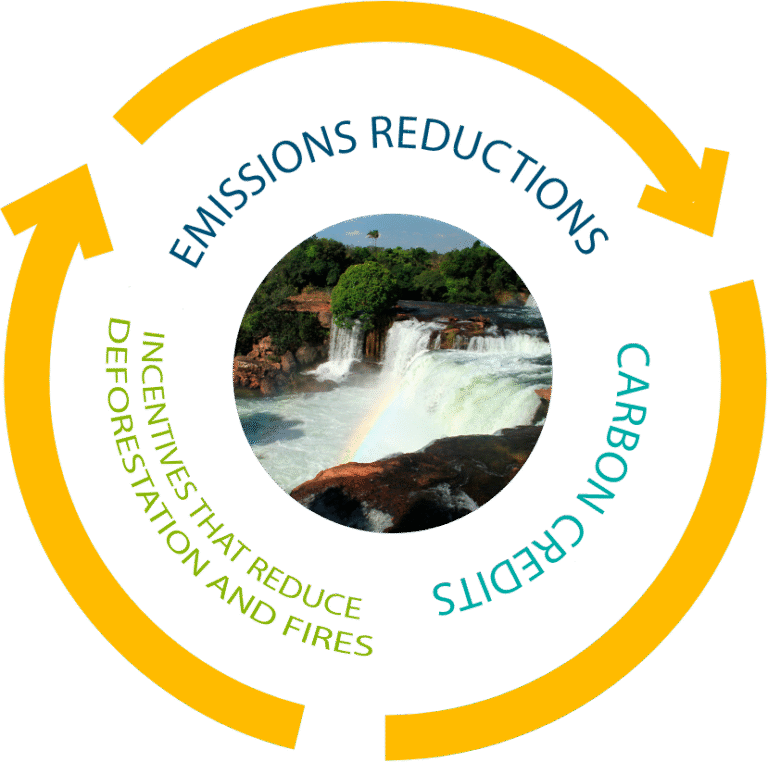The Tocantins Jurisdictional REDD+ Program is a pioneering REDD+ initiative using the market approach at a subnational level in Brazil, which aims to value state efforts to reduce greenhouse gas emissions (GHG) from deforestation and forest degradation, and promote conservation and reforestation activities throughout state territories. The program was established based on two legal frameworks: the State Policy for Environmental Conservation and Sustainable Development (PEMC) and the State Policy for Payment for Environmental Services (PEPSA).
In 2008, Tocantins established PEMC, which includes among its objectives the implementation of REDD+ initiatives at the state level. PEMC stipulates that the State of Tocantins is responsible for developing programs and the
management system to value reductions in emissions from deforestation. The law also authorizes Tocantins to trade carbon credits in national or international markets.
In 2023 PEPSA was published with the intent to value state efforts to reduce emissions and conserve carbon stocks within the state’s native vegetation, through the generation and commercialization of carbon credits resulting from reduced deforestation, forest degradation and the removal of carbon from the atmosphere (REDD+ actions) at the state level.
In addition to PEMC and PEPSA, the State of Tocantins made climate commitments to reduce forest carbon emissions.

The generation of carbon credits from the Jurisdictional REDD+ Program will follow a series of steps to ensure that carbon emissions reductions are real, measurable and verifiable. These steps are determined by the international carbon credit certification standard TREES (The REDD+ Environmental Excellence Standard) outlined by the ART (Architecture for REDD+ Transactions). ART/TREES was adopted by the Tocantins JREDD+ Program because it is currently the most internationally recognized standard for the generation of jurisdictional credits.
To generate jurisdictional credits, the State first needed to implement REDD+ actions throughout its territory, aiming at the systematic reduction of deforestation and forest degradation. The REDD+ actions of the State of Tocantins are provided by the following instruments: Plan for the Prevention and Combat of Deforestation and Forest Fires of the State of Tocantins (PPCDIF); Low Carbon Agriculture Plan of Tocantins (Plano ABC+TO), and Strategy for a Competitive and Sustainable Tocantins
In addition to implementing REDD+ actions, the State created a governance structure to coordinate the Jurisdictional Program, make decisions, ensure transparency and broad participation of stakeholders, especially PIQPCTAF (Indigenous peoples, quilombolas, traditional peoples and communities, and family farmers). The State also sought to ensure compliance with socio-environmental safeguards during the implementation of REDD+ actions and within governance of the program.
Once reductions in deforestation and degradation rates were observed, the government began to measure actual reductions in forest carbon emissions compared to the reference level. The reference level or baseline stipulates what the level of emissions from deforestation and degradation would be if the REDD+ program did not exist. In the case of Tocantins, this baseline was defined based on the average historical emissions from deforestation and degradation by fire from 2015 to 2019. In general terms, the difference between the annual deforestation observed after the implementation of REDD+ actions and the baseline corresponds to the avoided emissions, which is the volume of jurisdictional carbon credits that can be generated.
The reductions in emissions calculated by the State, as well as compliance with socio-environmental safeguards, must be verified by independent auditors. Verification ensures that the calculations made by the State are correct and that the actions implemented have actually reduced deforestation and degradation without causing adverse impacts to local communities, indigenous peoples and the environment, and that everything was done in accordance with the TREEs standard. If the reductions are confirmed, they are converted into carbon credits.
After verification by independent audit, the carbon credits will be registered in the official ART Registry system and can be sold on the carbon market.

The State assumes all costs of implementing the program and preparing the TREEs documents for generating carbon credits to be verified and registered, enabling a fair and equitable distribution of benefits among all relevant stakeholders and PIQPCTAF beneficiaries.
The Tocantins Jurisdictional REDD+ Program has key-elements which
guarantee its integrity and equitable distribution of benefits to the
population, including: 1) a REDD+ action strategy; 2) a robust governance
system; 3) an MRV system; 4) monitoring and reporting of compliance
with socio-environmental safeguards; and 5) an agreement on benefit-sharing.
Action plan(s) describing the REDD+ actions implemented to combat deforestation and forest degradation, and promote conservation within the jurisdiction
Structures, forums, and collegiate bodies, formed by governmental and non-governmental entities, to allow broad public participation and joint construction of the Program.
Set of processes and data used to quantify and monitor GHG emissions in the State to monitor the results of the Program.
Set of principles, guidelines and mechanisms created to ensure that REDD+ actions do not cause adverse social and environmental impacts.
Mechanism that defines how the financial and non-financial resources generated by the Program will be translated into benefits for the different actors that contributed to the Program’s results.